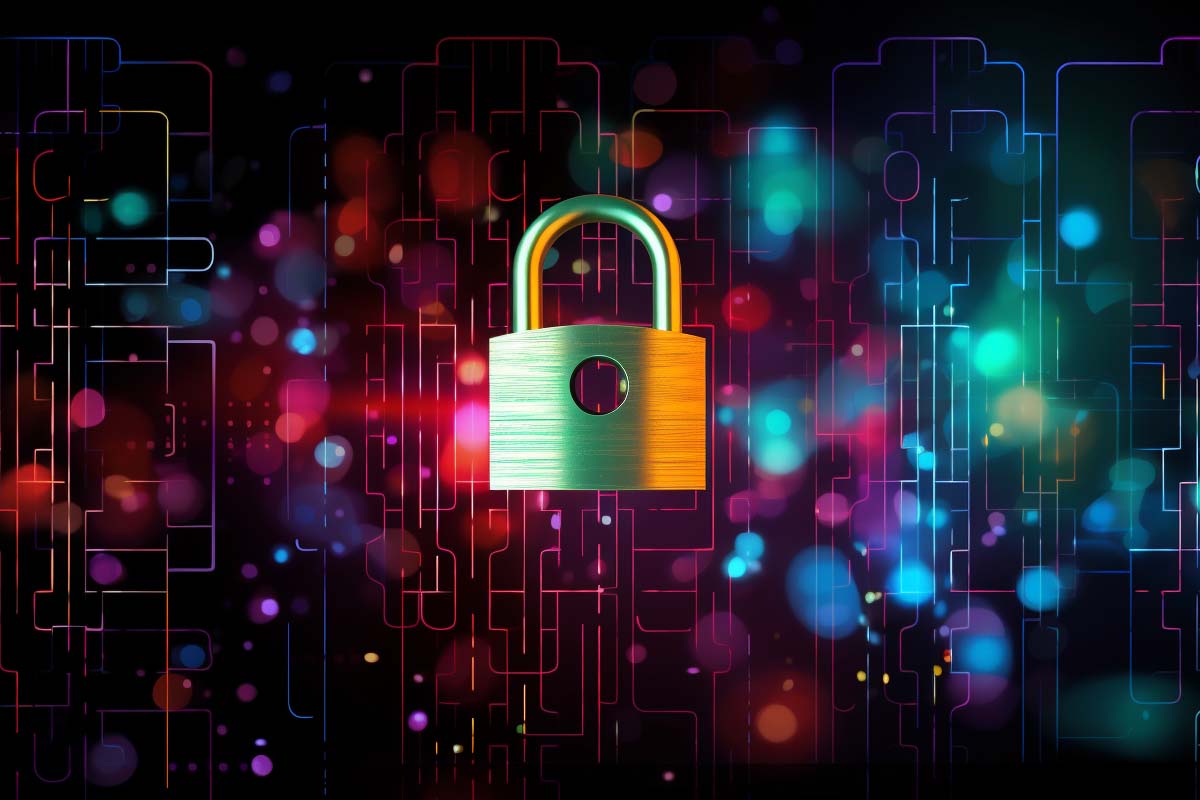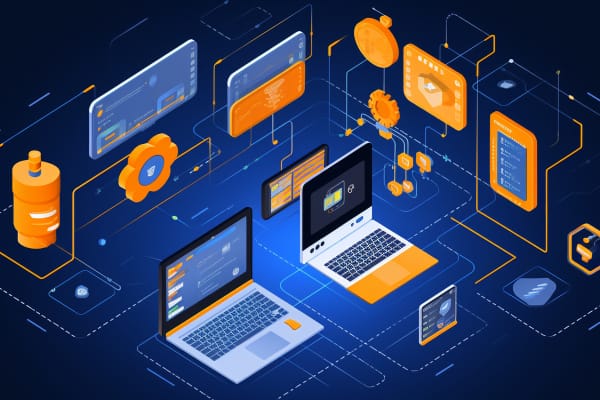In today’s rapidly evolving digital landscape, the significance of cybersecurity compliance cannot be overstated. As organizations increasingly rely on technology for every facet of their operations, the necessity to safeguard sensitive data against cyber threats becomes paramount. Cybersecurity compliance goes beyond adhering to regulatory requirements; it is a comprehensive strategy that fortifies an organization’s defenses against cyber threats such as DDoS attacks, phishing, malware, and ransomware.
Understanding Cybersecurity Compliance
At its core, cybersecurity compliance is about aligning with standards and regulations set by governing bodies or industry groups. This involves establishing robust controls to ensure the confidentiality, integrity, and availability (CIA) of information, whether it’s stored, processed, or in transit. However, with overlapping industry standards and requirements, achieving compliance can be a complex task for organizations.
The Critical Role of Compliance in Cybersecurity
Cybersecurity compliance is not just about risk management; it’s a strategic necessity. With cyber threats becoming increasingly sophisticated, no organization is immune to attacks. Compliance with cybersecurity standards is not just a legal requirement but also a crucial aspect of an organization’s success and operational smoothness. For small and medium-sized businesses (SMBs), this is particularly crucial as they often become targets for cybercriminals due to perceived vulnerabilities.
Data breaches can lead to complex, reputation-damaging scenarios and financial losses. Hence, compliance is an integral part of a robust cybersecurity framework, aiding in the protection against and mitigation of cyber threats.

Information Security Manager Career Path
Propel your career forward and be part of an essential member of any management team as an Information Security Manager. This advanced training series is designed specifically for those want to move up into a management position in the IT field.
Data Types and Compliance
Cybersecurity and data protection laws predominantly focus on sensitive data, encompassing personally identifiable information (PII), financial information, and protected health information (PHI). Compliance requirements may also extend to other types of sensitive data like IP addresses, email credentials, and biometric data.
Data Types and Compliance play a crucial role in cybersecurity, focusing on the protection of sensitive information from unauthorized access, disclosure, alteration, or destruction. Understanding these data types and their respective compliance requirements is essential for organizations to effectively safeguard their assets and maintain regulatory compliance. Here are the key data types along with their compliance considerations:
- Personally Identifiable Information (PII):
- Data Components: Names, addresses, social security numbers, dates of birth, and other identifiers.
- Compliance Regulations: GDPR, CCPA, and other data protection laws mandate strict handling and protection of PII.
- Financial Information:
- Data Components: Credit card numbers, bank account details, credit history, and transaction data.
- Compliance Regulations: PCI DSS ensures the security of cardholder data during transactions. Sarbanes-Oxley Act (SOX) governs the financial reporting and data management of public companies.
- Protected Health Information (PHI):
- Data Components: Medical records, insurance information, and any health data that can be linked to an individual.
- Compliance Regulations: HIPAA sets the standard for the protection of sensitive patient data in the healthcare sector.
- Intellectual Property (IP):
- Data Components: Trade secrets, patents, copyrights, product designs, and proprietary technology.
- Compliance Regulations: Varies by jurisdiction, but generally involves stringent access controls and legal protections to prevent unauthorized use or disclosure.
- Educational Records:
- Data Components: Student academic records, enrollment details, and disciplinary records.
- Compliance Regulations: FERPA governs the access and privacy of educational information and records in the United States.
- Employment Information:
- Data Components: Employee personal records, performance data, and employment history.
- Compliance Regulations: Various labor laws and regulations like the Fair Labor Standards Act (FLSA) and Equal Employment Opportunity laws oversee the protection and confidentiality of employment data.
- Sensitive Corporate Data:
- Data Components: Business strategies, financial forecasts, mergers and acquisition plans, and internal communication.
- Compliance Regulations: Various industry-specific and general regulations, including trade secret laws and non-disclosure agreements, protect this type of information.
- Digital Identity and Authentication Data:
- Data Components: Usernames, passwords, biometric data, and other authentication details.
- Compliance Regulations: Regulations like NIST guidelines for digital identity and access management.
Understanding these data types and corresponding compliance requirements is pivotal for organizations to ensure they are handling data responsibly and protecting it from threats. Regular audits, employee training, and a robust data protection strategy are key to maintaining compliance and safeguarding sensitive information.
Benefits of Rigorous Cybersecurity Compliance
Proper cybersecurity compliance measures offer numerous benefits:
- Reputation Protection: Shields the organization’s public image by preventing breaches.
- Trust and Confidence: Fosters trust and confidence among customers and clients.
- Security Posture Improvement: Enhances the overall security framework of the organization.
- Intellectual Property Protection: Secures crucial IP assets, thereby maintaining a competitive edge.
Initiating a Cybersecurity Compliance Program
Starting a cybersecurity compliance program might seem daunting, but it can be structured into manageable steps:
- Form a Compliance Team: Engage IT and other departments to collaborate on cybersecurity matters.
- Implement a Risk Analysis Process: Identify, assess, analyze, and set tolerance levels for risks.
- Establish Controls: Set up technical and physical controls to mitigate or transfer risks.
- Develop Policies: Document policies related to the established controls for governance and future audits.
- Monitor and Respond: Regularly review the compliance program and have mechanisms in place for prompt response to incidents.

Information Security Analyst Career Path
An Information Security Analyst plays a pivotal role in safeguarding an organization’s digital infrastructure and sensitive data. This job involves a blend of technical expertise, vigilance, and continuous learning to protect against ever-evolving cyber threats.
Navigating Major Cybersecurity Regulations
Understanding and adhering to pertinent cybersecurity regulations is essential. Regulations like PCI DSS, HIPAA, SOC 2, NYDFS Cybersecurity Regulation, GDPR, FERPA, NIST, CCPA, and CMMC outline specific compliance requirements based on the industry and data handled. Staying informed about these regulations and how they apply to your organization is critical for maintaining compliance.
Understanding major cybersecurity regulations is essential for organizations to ensure they meet the required standards for protecting sensitive data and maintaining operational integrity. Here’s an overview of each major cybersecurity regulation:
- PCI DSS (Payment Card Industry Data Security Standard):
- Purpose: Protects cardholder data in credit card transactions.
- Key Requirements: Includes building and maintaining a secure network, protecting cardholder data, maintaining a vulnerability management program, implementing strong access control measures, regularly monitoring and testing networks, and maintaining an information security policy.
- HIPAA (Health Insurance Portability and Accountability Act):
- Purpose: Ensures the confidentiality, availability, and integrity of protected health information (PHI).
- Key Requirements: Applies to healthcare providers, plans, and clearinghouses, mandating safeguards for PHI and setting standards for patients’ rights to control their own medical information.
- SOC 2 (System and Organization Controls 2):
- Purpose: Provides guidelines for managing customer data based on five trust service principles: security, availability, processing integrity, confidentiality, and privacy.
- Key Requirements: Each organization designs its own controls to adhere to one or more of the trust principles. While not mandatory, it’s critical for SaaS and cloud computing vendors.
- NYDFS Cybersecurity Regulation (23 NYCRR 500):
- Purpose: Establishes cybersecurity requirements for financial services companies in New York.
- Key Requirements: Includes risk assessments, documentation of cybersecurity policies, and the designation of a Chief Information Security Officer (CISO) to oversee the program.
- GDPR (General Data Protection Regulation):
- Purpose: Regulates data protection and privacy for individuals within the European Union.
- Key Requirements: Includes provisions for data subject rights, data protection impact assessments, data protection officers, and requirements for data breach notifications.
- FERPA (Family Educational Rights and Privacy Act):
- Purpose: Protects the privacy of student education records.
- Key Requirements: Applies to all schools that receive funds from the U.S. Department of Education, giving parents or eligible students certain rights with respect to their education records.
- NIST (National Institute of Standards and Technology) Guidelines:
- Purpose: Provides a comprehensive set of standards and guidelines to help federal agencies and other organizations manage and protect their information systems.
- Key Requirements: Includes guidelines like the NIST 800-53 for information security and the NIST 800-171 for protecting controlled unclassified information in non-federal systems.
- CCPA (California Consumer Privacy Act):
- Purpose: Enhances privacy rights and consumer protection for residents of California.
- Key Requirements: Includes the right to know about the personal information a business collects about them and how it is used and shared, the right to delete personal information, the right to opt-out of the sale of personal information, and the right to non-discrimination for exercising their CCPA rights.
- CMMC (Cybersecurity Maturity Model Certification):
- Purpose: Protects Federal Contract Information (FCI) and Controlled Unclassified Information (CUI) within the supply chain of the Department of Defense (DoD).
- Key Requirements: Organizations must meet specific cybersecurity standards and undergo an audit by a certified third-party assessment organization (C3PAO) to verify compliance.
These regulations vary in their specifics but are all integral to establishing and maintaining a secure and compliant operational environment. Organizations must stay informed and compliant with these regulations relevant to their industry and operations to protect their data and avoid legal and financial penalties.
Compliance Assessment Checklist
A compliance assessment checklist is a valuable tool for ensuring that an organization meets the necessary regulatory standards. It’s advisable to utilize resources from credible bodies like the Payment Card Industry Security Standards Council (PCI SSC), the American Institute of CPAs (AICPA), and the National Institute of Standards and Technology (NIST) to create a comprehensive checklist.

Ethical Hacker Career Path
If you’re looking to truly realize the full potenital of using Microsoft Power BI, ITU offers an excellent course designed to teach you all about using this exceptional reporting too.
Prioritizing Cybersecurity Compliance
In an era marked by escalating cyber threats and evolving data protection laws, prioritizing cybersecurity compliance is not just a legal obligation but a strategic imperative. Understanding the nuances of compliance and how it impacts your organization is the first step towards safeguarding your operations and maintaining the trust of your customers.
By fostering a culture of compliance and staying abreast of the latest regulations and best practices, organizations can not only mitigate risks but also position themselves for sustained growth and success in the digital age.
In an increasingly interconnected world, cybersecurity compliance is not merely an option but a cornerstone of corporate strategy, pivotal for safeguarding an organization’s assets, reputation, and customer trust. As we delve deeper, it’s clear that making cybersecurity compliance a priority equips an organization to navigate the digital landscape more securely and successfully.
Integrating Cybersecurity Compliance into Corporate Culture
Cultivating a culture of cybersecurity compliance within an organization goes beyond implementing policies and procedures; it involves ingraining a mindset of security awareness across all levels. Employees should be educated about the potential risks and the importance of compliance standards. Regular training sessions, workshops, and simulations of phishing or other cyberattack scenarios can keep the staff vigilant and prepared.
Integrating cybersecurity compliance into corporate culture is a multi-faceted process that involves strategic planning, education, and continuous engagement. It’s not just about enforcing rules but embedding a mindset of security awareness and responsibility throughout the organization. Here are the key steps to effectively integrate cybersecurity compliance into corporate culture:
- Top-Level Commitment and Support:
- Leadership Involvement: Ensure that the executive team understands the importance of cybersecurity and is committed to supporting compliance initiatives.
- Resource Allocation: Dedicate sufficient resources, including budget, tools, and personnel, to implement and maintain cybersecurity measures effectively.
- Develop a Clear Cybersecurity Policy:
- Policy Creation: Draft comprehensive cybersecurity policies that outline expected behaviors, responsibilities, and protocols.
- Policy Accessibility: Make sure the policies are easily accessible and understandable for all employees.
- Regular Training and Awareness Programs:
- Ongoing Education: Conduct regular training sessions to educate employees about the latest cybersecurity threats, best practices, and the importance of compliance.
- Engaging Content: Use engaging and varied content formats such as videos, quizzes, and interactive sessions to keep the training sessions interesting and memorable.
- Promote a Culture of Open Communication:
- Encourage Reporting: Foster an environment where employees feel comfortable reporting security concerns, incidents, or potential threats without fear of repercussions.
- Feedback Channels: Establish clear channels through which employees can provide feedback on cybersecurity policies and their implementation.
- Integrate Cybersecurity into Business Processes:
- Risk Assessment: Embed cybersecurity risk assessments into major business decisions and new project initiatives.
- Vendor Management: Ensure that third-party vendors and partners comply with your cybersecurity standards to secure the supply chain.
- Implement Strong Access Control Measures:
- Least Privilege Principle: Ensure that employees have access only to the information necessary to perform their job functions.
- Authentication and Authorization: Use robust authentication methods and regularly review access permissions.
- Regularly Review and Update Policies and Protocols:
- Continuous Improvement: Regularly review and update cybersecurity policies and practices to adapt to new threats and changes in the business environment.
- Audit and Compliance Checks: Conduct regular audits to ensure compliance with internal policies and external regulations.
- Incorporate Cybersecurity into Performance Metrics:
- Accountability: Make adherence to cybersecurity policies part of performance evaluations.
- Recognition and Incentives: Recognize and reward compliance and proactive behaviors that promote cybersecurity.
- Plan for Incident Response and Recovery:
- Incident Response Plan: Develop and regularly test an incident response plan to ensure your organization can quickly respond to and recover from cybersecurity incidents.
- Business Continuity: Integrate cybersecurity into your organization’s business continuity and disaster recovery plans.
- Lead by Example:
- Model Behavior: Management should lead by example by adhering to cybersecurity policies and demonstrating a commitment to the organization’s cybersecurity culture.
- Visibility: Regularly communicate the importance of cybersecurity compliance from the top down, emphasizing that it is a shared responsibility.
By following these steps, organizations can integrate cybersecurity compliance into their corporate culture, ensuring that it becomes an integral part of the way they operate. This not only minimizes the risk of cyber incidents but also fosters a corporate environment that values and protects its data, reputation, and customer trust.
Leveraging Technology for Compliance
Technology plays a pivotal role in ensuring cybersecurity compliance. Advanced solutions like encryption, network firewalls, and intrusion detection systems can provide robust defenses against cyber threats. Moreover, technologies powered by artificial intelligence and machine learning can predict and mitigate potential breaches before they escalate into serious threats.
Leveraging technology for compliance is pivotal in protecting an organization’s data, reputation, and customer trust. Implementing advanced technological solutions can significantly bolster an organization’s cybersecurity posture. Here are ways in which technology can be leveraged for compliance:
- Data Encryption:
- Encrypt sensitive data both at rest and in transit to ensure that even if data is intercepted or accessed unauthorizedly, it remains unreadable and secure.
- Advanced Threat Protection:
- Employ advanced threat protection solutions that use artificial intelligence and machine learning to detect, analyze, and respond to cybersecurity threats in real-time.
- Intrusion Detection Systems (IDS) and Intrusion Prevention Systems (IPS):
- Implement IDS and IPS to monitor network and system activities for malicious activities or policy violations, providing an additional layer of protection.
- Secure Access Service Edge (SASE):
- Adopt SASE architecture to integrate networking and security services into a single cloud-based service, enhancing security for organizations with remote or distributed workforces.
- Identity and Access Management (IAM):
- Use IAM solutions to ensure that only authorized individuals have access to specific resources in your organization, enforcing the principle of least privilege.
- Security Information and Event Management (SIEM):
- Implement SIEM systems for real-time analysis of security alerts generated by applications and network hardware, helping in early detection of potential threats.
- Regular Security Audits and Compliance Monitoring:
- Conduct regular security audits and use compliance monitoring tools to continuously assess and ensure adherence to various regulatory standards.
- Data Loss Prevention (DLP):
- Utilize DLP tools to detect and prevent data breaches, leaks, or unwanted destruction of sensitive data.
- Cloud Security Solutions:
- For organizations utilizing cloud services, implement cloud-specific security measures, including cloud access security brokers (CASB), to protect and monitor data in the cloud.
- Endpoint Protection:
- Secure all endpoint devices such as mobile phones, tablets, and laptops using endpoint protection platforms to prevent data breaches and cyber threats.
- Automated Patch Management:
- Use automated patch management tools to ensure that all software is up-to-date with the latest security patches, reducing vulnerabilities.
- Phishing Protection:
- Implement email filtering and anti-phishing solutions to protect employees from phishing attacks and other social engineering tactics.
- VPN and Zero Trust Network Access (ZTNA):
- Employ VPNs for secure remote access and consider adopting a Zero Trust framework to ensure strict verification for every person and device trying to access resources on a private network.
By integrating these technological solutions, organizations can significantly enhance their ability to protect data, maintain a solid reputation, and earn and retain customer trust. It’s essential, however, to ensure that these technologies are properly implemented, regularly updated, and part of a broader, cohesive cybersecurity strategy.
Continuous Monitoring and Improvement
Cybersecurity is not a one-time fix but a continuous process of improvement. Regular audits, monitoring, and updating of security policies and practices are essential to stay ahead of emerging threats. Organizations should not only comply with current standards but also anticipate future regulations and prepare accordingly.
Engaging with Cybersecurity Experts
Given the complexity and ever-evolving nature of cybersecurity threats and regulations, partnering with cybersecurity experts can provide valuable insights and guidance. These experts can assist in risk assessments, compliance audits, and the formulation of a strategic response to potential cyber incidents.
Preparing for the Unexpected
Even with stringent compliance measures in place, the possibility of a breach cannot be entirely eliminated. Organizations must have an incident response plan ready to address any breaches promptly and efficiently. This plan should include steps for containing the breach, assessing the damage, notifying affected parties, and taking corrective actions to prevent future incidents.

Pentester Career Path
Embarking on the Pentester Career Path is a journey into the intricate and dynamic world of cybersecurity. This series is designed to equip aspiring professionals with the skills and knowledge essential for excelling in the field of penetration testing.
Conclusion
In conclusion, cybersecurity compliance is a multifaceted and dynamic challenge that requires a proactive and comprehensive approach. By understanding the intricacies of cybersecurity compliance, integrating it into the corporate culture, leveraging technology, engaging with experts, and preparing for potential incidents, organizations can fortify their defenses against the myriad of cyber threats.
As the digital realm continues to expand and evolve, the importance of cybersecurity compliance will only grow. Organizations that prioritize and continuously refine their cybersecurity compliance strategies will not only protect themselves against immediate threats but also establish a foundation for long-term resilience and success in the digital future.
Frequently Asked Questions Related To Cybersecurity Compliance
What is cybersecurity compliance and why is it important?
Cybersecurity compliance involves adhering to laws, regulations, and guidelines designed to protect sensitive data and information systems from threats and vulnerabilities. It’s crucial because it not only helps in protecting an organization from data breaches and cyber-attacks but also ensures that the organization is following legal and ethical standards, thereby preserving its reputation and maintaining customer trust.
How does cybersecurity compliance differ from cybersecurity security?
Cybersecurity compliance refers to meeting specific standards and regulations set by governing bodies or industry organizations, often focusing on the protection and privacy of data. Cybersecurity, on the other hand, encompasses a broader range of activities and technologies aimed at protecting networks, devices, programs, and data from attack, damage, or unauthorized access. Compliance is about meeting specific criteria, while security is about protecting assets.
What are the consequences of non-compliance with cybersecurity regulations?
Non-compliance can lead to severe consequences including hefty fines, legal actions, damage to the organization’s reputation, loss of customer trust, and in some cases, even business closure. Additionally, non-compliance can make an organization more vulnerable to cyber-attacks, resulting in potential data breaches and loss of sensitive information.
How can an organization stay updated with the ever-changing cybersecurity compliance regulations?
Staying updated requires a proactive approach, including subscribing to updates from regulatory bodies, engaging in industry forums, attending relevant cybersecurity conferences, and consulting with legal and cybersecurity experts. Additionally, implementing a robust compliance management system can help track changes in regulations and ensure that the organization adapts its policies and procedures accordingly.
What steps should a small or medium-sized enterprise (SME) take to ensure cybersecurity compliance?
SMEs should first identify the specific regulations applicable to their industry and type of data they handle. The next steps include conducting a risk assessment, developing a comprehensive cybersecurity policy, training employees, implementing necessary security measures (like firewalls, encryption, and access controls), and regularly reviewing and updating their security practices. It’s also advisable for SMEs to consult with cybersecurity experts to ensure that their compliance measures are robust and up-to-date.
























